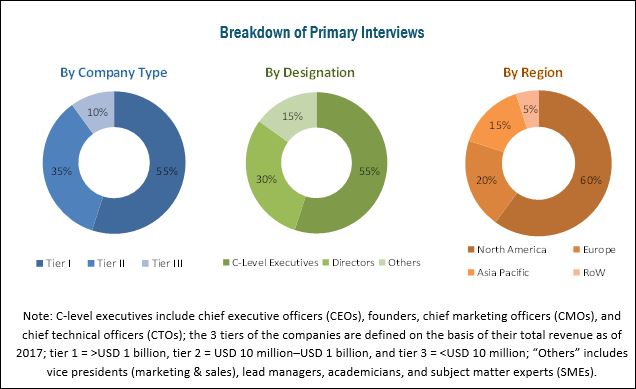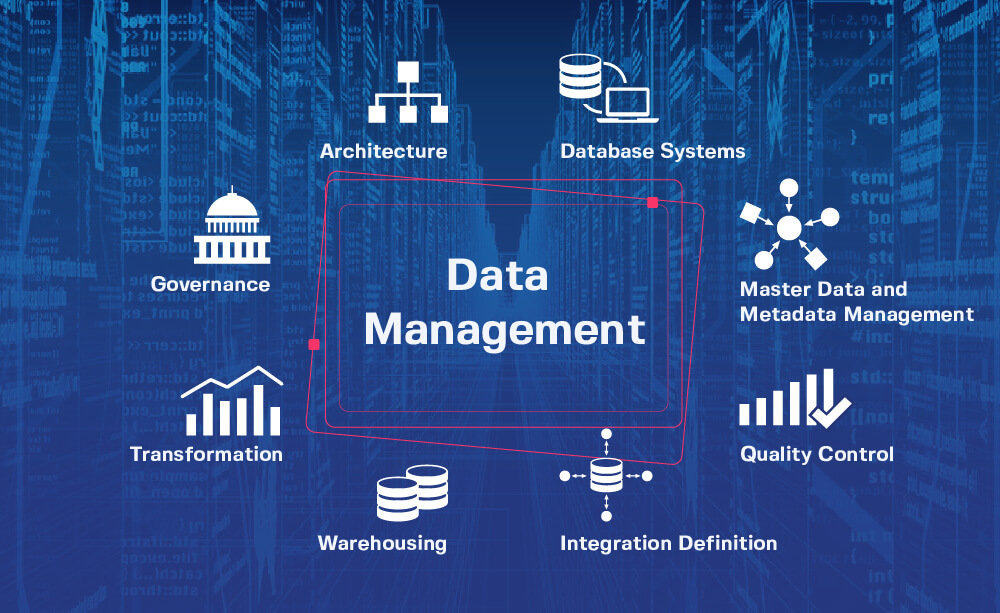3 Ways You Can Utilize AI To Scale Customer Acquisition And Retention

There are only so many insights businesses can gather by mining their sales data. In the best-case scenario, marketing-wise, data mining tools make it easier to understand which products and services customer groups want to purchase the most. But all of the data mining tools in the world put together are still too clunky and time-consuming to personalize the customer experience and convert more customers.
Digital marketers can, fortunately, convert their sales data into a retention and acquisition strategy that uses artificial intelligence (AI)-driven personalization to better connect with customers. With AI, businesses can take advantage of the more than two hours that social media users spend daily on social channels to personalize their real-time customer interactions. The best methods to use AI to scale the customer acquisition and retention process, however, can often be difficult to determine.
To that end, let’s take a look at the three best ways businesses can use AI to improve their personal messaging and more effectively connect with and convert a greater number of online customers.
Why Use AI?
These days, ‘AI’ may feel like a buzzword or a cure-all. Almost every tech solution seems to use it, claiming to do things faster and better. Artificial intelligence is simply a general term for a class of technology meant to mimic human decision-making. AI is built on machine learning (ML) models, a mathematical approach used to train computers to “learn” from past experience. Data is fed into an equation that adapts as it goes, using past results to inform future decisions and improve performance over time.
Because of this iterative learning approach, machine learning models are particularly good at predictive and classification tasks. For example, they can predict traffic patterns and filter out spam emails. But as the technology advances, its applications become more numerous. A subfield of ML, called deep learning, has recently taken this analysis and prediction a step further. It uses customer data to make personalized recommendations. If you’ve ever watched a show Netflix recommended, you benefited from deep learning.

The same tech that goes into personalized recommendations can be used for other customer analyses as well. This is why, according to one prediction, AI is predicted to bring $1.4-2.6 trillion of future value for global sales and marketing. When it comes to customer acquisition and retention, AI-powered solutions can learn from what users do and say online to predict what they will like – and companies can use these insights to find and convert prospects.
Benefits of Machine Learning
Another application of ML is Natural Language Processing (NLP), a fancy term for teaching computers to understand human speech and writing. AI voice assistants like Alexa, as well as the chatbots which answer most of your questions these days, are two common examples of NLP in action. For customer acquisition, so-called conversational AI can be used to lower costs and increase relevance in online interactions.
AI can also be used to automate repetitive processes in lead management, such as lead scoring to determine the value of prospects based on various attributes. The same technology also has applications in sentiment analysis – for example, of social media posts – using competitors’ customer commentary to convert dissatisfied customers. Similar analysis can be applied to one’s own customers to create targeted retention plans.
Overall, ML’s capacity for personalization, behavior prediction, and NLP are extremely useful for anything dealing with customer data or customer interactions. Since most of the customer journey now takes place online, it is more crucial than ever for companies to provide targeted, personalized marketing and support for converting prospects.
Track Customer Profiles Dynamically
Compared to marketing strategies like customized ads and emails, it’s much easier to understand customer interactions with different brands using dynamic, AI-enabled tracking. Send customized ads and promotions based on behavioral data, and hope for the best, businesses can use AI to build a complete journey map of customer interactions.

Dynamic tracking begins when a lead first lands on your site. As your leads move across your website and interact with its pages, AI-based tracking can ingest that data and customize that lead’s next interaction with your brand.
Ultimately, AI-enabled dynamic tracking of customer profiles can continue to deepen the ways you customize the customer experience of your site’s visitors, as long as you continue to gather data. Personalization isn’t limited to individual leads, either. Larger marketing interactions can be customized, too. AI makes it clear what information your audience needs to move from one step to the next, allowing you to develop a website with a “customized” content selection that addresses specific queries and concerns.
Well-designed websites go a long way toward making it easy for your visitors to navigate your content. Managing an entire team of web developers, though, can be expensive and often unnecessary for businesses with new eCommerce presences. Consider hiring a freelance developer. You can expect to pay upwards of $100 an hour for a quality freelance developer who knows what they’re doing.
Use Data Management Profiles
Whether your goals with AI are to drive more sales or acquire more leads, your business still needs a way to collect as many data points as possible. Managing countless data points from multiple devices is, of course, an exercise in futility and endless hours of wasted labor.
Regardless, businesses selling online need to take advantage of data points from the growing cohort of multi-device users: By 2030, research shows that users will have around fifteen different connected devices. This will further fragments the information marketers have at their fingertips. Data management platforms, or DMPs, may, thankfully, hold the key to efficiently gathering, organizing, and sharing.
With a DMP, businesses interested in expanding their eCommerce presence and scaling their customer acquisition and retention can collect data (both online and offline) through CRMs, point-of-sale units, mobile platforms, and other channels. Businesses that collect data this way can then segment their data points based on various demographics and behaviors as well as devices and user preferences.

AI can expedite the process of segmenting customer data points based on the previous behavioral trends you’ve collected while tracking customer profiles. Not only can AI analyze and segment huge amounts of data, but it can also more importantly create segments of your target audience that you can manage on a DMP. From there, marketers can make better sense of their data at a glance and make quicker decisions to ensure customers received tailored experiences based on a complete perspective of their profile.
Choose an AI-enabled Web Host Provider
To go through the effort of optimizing your acquisition and retention strategies only to fall victim to a cyber attack is a preventable crisis. Cyber-attacks have indeed increased significantly in the last year, and website owners with their eye toward e-Commerce growth are understandably wary of choosing the wrong web host provider. It’s therefore crucial that website owners choose a hosting company that can guarantee a quick turnaround against malware threats.
Web hosting providers that have AI-enabled capabilities can often receive early alerts about malware and phishing attempts against their client’s site. Certain hosting providers can integrate their AI capabilities that analyze and process data with machine learning that can help predict future attacks from identifiable threat actors.
If possible, choose a web host provider that also provides affordable hosting plans made possible through shared hosting. According to London-based software developer Alexander Williams of Hosting Data, shared hosting is the least expensive and most common hosting option for SMEs.
“Of course, with less cost comes fewer resources, so shared hosting offers the least amount of power,” says Williams. “But it does come with great user-friendliness, with features like 1-click install. You have what you need to manage your site, creating a unique look without needing years of coding experience.”
It’s impossible to prepare for cyberattacks or data breaches one hundred percent of the time. Hosting providers should make you aware of precautionary measures they pursue to limit who can access your customer and client information using administrative privileges to mitigate the risk of data breaches. Ensure that the hosting provider with whom you work uses data collection efforts that are compliant with data privacy laws in your jurisdiction in the event they need it for disaster recovery.
Conclusion
Though not always clear-cut, the ways that businesses with an online presence can scale customer acquisition and retention are both numerous and straightforward to implement. The improvement of any retention program that relies on AI capabilities should focus on dynamically tracking customer profiles.
AI-enabled, dynamic customer profile tracking paints a complete map of your website visitors’ journeys. You can then use their data points to help create an effective data management profile.
Maintain your website’s uptime to the greatest extent possible with an AI-empowered website host that can mitigate and quickly respond to cyber-attacks and data breaches.
Sign Up For Our Mailing List
If you’d like to receive more in-depth articles, videos, and Infographics in your inbox, please sign up below. We’ll also keep you abreast of our upcoming soup-to-nuts blogging class.

Sign up for the newest articles from Curatti, delivered straight to your inbox
Featured image: Copyright: ‘https://www.123rf.com/profile_phonlamaiphoto‘ / 123RF Stock Photo
Latest posts by Nahla Davies (see all)
- How To Use AI-based Video Content to Elevate Your Customer’s Viewing Experience - November 30, 2021
- 3 Ways You Can Utilize AI To Scale Customer Acquisition And Retention - August 19, 2021
- 3 Ways AI and Machine Learning are Transforming B2B Marketing - May 26, 2021
